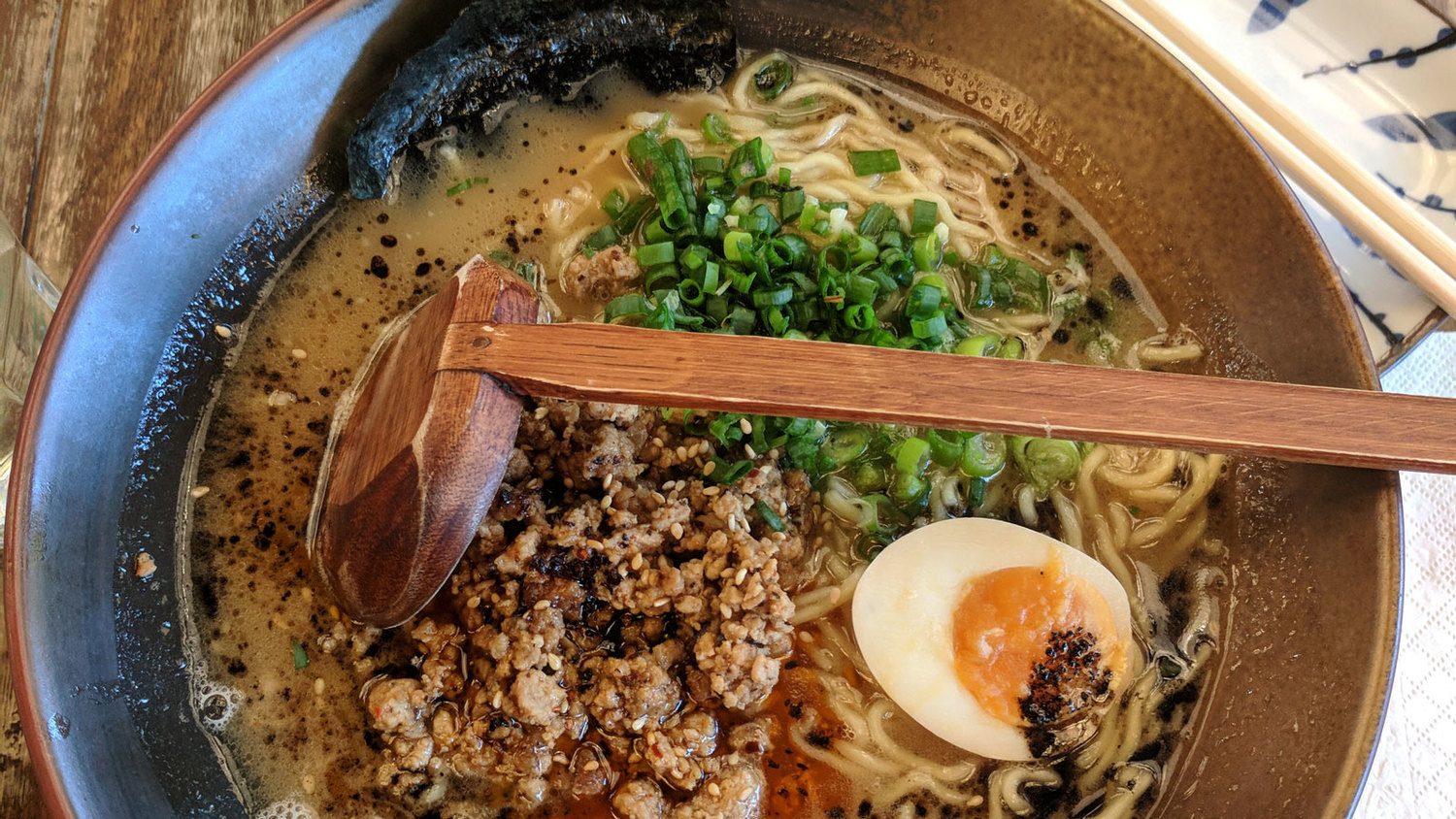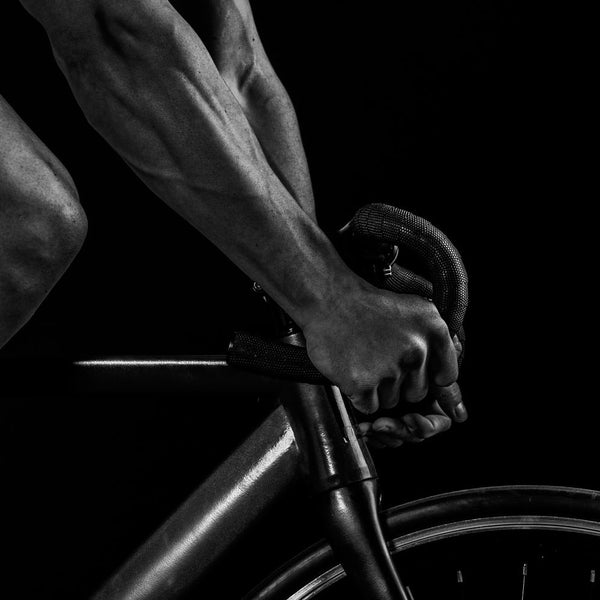
Guide To Low Carb Options For Japanese Cuisine
Welcome (back) to our series where we look into how you can eat low carb when dining out at different restaurants and cuisines! Check out our Dining Out Low Carb page for other guides. Today, we will be taking a dive into one of my all-time favourites, Japanese cuisine. When most people think about Japanese food, their brain automatically conjures images of heavy carb dishes like sushi rolls and ramen noodles – delicious, yes, low-carb, no.
Have you ever encountered a situation where your friends, family or co-workers want to go out for dinner, and say “Hey what about Japanese or Italian?” and you think to yourself “Oh gosh, how am I going to manage this?!”. It can definitely be a bit tricky to manage your low carb or keto diet when eating out, but we’re here to help!
Let’s jump in and look at what to go for when you’re trying to stay low carb at a Japanese restaurant.
Probably the most obvious one you’ll find on the menu but steer clear of these. One average maki roll (usually cut into 5 or 6 pieces) can have as much as 60g of carbs! The worst offenders are tempura nori rolls with the double whammy of rice and batter.
If you would like to learn more, Sushifaq.com has an extremely thorough nutritional breakdown of the various kinds of sushi such as California roll and Salmon and Avocado roll.
Second only to maki rolls is nigiri sushi. Instead of being rolled in rice, these are usually a thin slice of raw, or occasionally lightly grilled fish, on a bed of rice. Despite being lower carb than maki rolls, just one piece of nigiri sushi has around 8-10g of carbs on average and I’m guessing you’re like me and would probably need to eat about 10 of these to fill up!
As delicious as these are, one serving (around 1/2 cup) of edamame (soy beans) has around 9g of carbs. They’re a popular entree option and are served warm and lightly salted. This won’t be a deal breaker and if you’re good with everything else then go for it, but if you’re trying to be super strict then avoid edamame!
From our research into The 50 Lowest Carb Vegetables, seaweed is actually really low in carbs and a rich source of protein! HOWEVER, traditional Japanese seaweed salad (also known as ‘Wakame Sarada’) is not just seaweed and is usually marinated in soy sauce, sugar, ginger juice, sesame seeds as well as a few other things. As delicious as it is, this does bump up the carbs to around 10g per serve which makes it not-so-low carb. Sharing this side with someone will also reduce how much you consume, and afterall, sharing is caring!
Sashimi is a fantastic food to eat in general, and even more so when you’re trying to stay low carb at a Japanese restaurant. Sashimi is simply raw fish, a meat, which means it’s mostly protein, a good amount of healthy fats and only a trace amount of carbs. One piece of sashimi (approx. 30g or 1 oz) has between 5-8g of protein and less than 1g of carbs. Salmon and tuna are the most common choices, but we recommend trying different fish like kingfish or snapper. Even more delicious with some soy sauce and wasabi!
Often served in a small bowl as a starter before the main dish, miso soup is generally quite low carb with only 5-6g of carbs per serve. Miso soup is made from a stock called dashi, miso paste and often has wakame (seaweed) and occasionally tofu. Despite its small size, miso soup can help fill you up so you don’t overeat on other dishes.
 This is a personal favourite of mine and it’s not always easy to find, but if you can, then definitely try it out! Konjac ramen uses special konjac noodles (also known as shirataki noodle) made from the root of the elephant yam and are super low carb (around 2-3g / 100g). Now, the rest of the ingredients in the ramen are going to vary quite a lot from place to place but are generally reasonably low carb.
My favourite place to get Konjac Ramen is a restaurant called Kuroneko Ramen in Sutherland, Sydney. I've popped the link below so you can check it out.
This is a personal favourite of mine and it’s not always easy to find, but if you can, then definitely try it out! Konjac ramen uses special konjac noodles (also known as shirataki noodle) made from the root of the elephant yam and are super low carb (around 2-3g / 100g). Now, the rest of the ingredients in the ramen are going to vary quite a lot from place to place but are generally reasonably low carb.
My favourite place to get Konjac Ramen is a restaurant called Kuroneko Ramen in Sutherland, Sydney. I've popped the link below so you can check it out.
 Aside from the obvious (water, silly), green tea is super low carb and is reported to help with digestion. Hot or iced green tea is both okay! Looking for something a bit stiffer, go for a traditional sake which generally has around 5g per 100ml, but it is an alcohol with caloric value – enjoy in moderation 🙂
Aside from the obvious (water, silly), green tea is super low carb and is reported to help with digestion. Hot or iced green tea is both okay! Looking for something a bit stiffer, go for a traditional sake which generally has around 5g per 100ml, but it is an alcohol with caloric value – enjoy in moderation 🙂
Foods to Avoid When Eating Low Carb at a Japanese Restaurant
 🚫 Maki Rolls (also known as sushi rolls)
🚫 Maki Rolls (also known as sushi rolls)
Probably the most obvious one you’ll find on the menu but steer clear of these. One average maki roll (usually cut into 5 or 6 pieces) can have as much as 60g of carbs! The worst offenders are tempura nori rolls with the double whammy of rice and batter.
If you would like to learn more, Sushifaq.com has an extremely thorough nutritional breakdown of the various kinds of sushi such as California roll and Salmon and Avocado roll.
 🚫 Nigiri Sushi (A slice of raw fish on a bed of rice)
🚫 Nigiri Sushi (A slice of raw fish on a bed of rice)
Second only to maki rolls is nigiri sushi. Instead of being rolled in rice, these are usually a thin slice of raw, or occasionally lightly grilled fish, on a bed of rice. Despite being lower carb than maki rolls, just one piece of nigiri sushi has around 8-10g of carbs on average and I’m guessing you’re like me and would probably need to eat about 10 of these to fill up!
Foods to Consume in Moderation When Eating Low Carb at a Japanese Restaurant
 ✋ Edamame (Sorry)
✋ Edamame (Sorry)
As delicious as these are, one serving (around 1/2 cup) of edamame (soy beans) has around 9g of carbs. They’re a popular entree option and are served warm and lightly salted. This won’t be a deal breaker and if you’re good with everything else then go for it, but if you’re trying to be super strict then avoid edamame!
 ✋ Seaweed Salad (Wakame Sarada)
✋ Seaweed Salad (Wakame Sarada)
From our research into The 50 Lowest Carb Vegetables, seaweed is actually really low in carbs and a rich source of protein! HOWEVER, traditional Japanese seaweed salad (also known as ‘Wakame Sarada’) is not just seaweed and is usually marinated in soy sauce, sugar, ginger juice, sesame seeds as well as a few other things. As delicious as it is, this does bump up the carbs to around 10g per serve which makes it not-so-low carb. Sharing this side with someone will also reduce how much you consume, and afterall, sharing is caring!
The Best Low Carb Options at a Japanese Restaurant
 ✅ Sashimi (Say YES to fresh fish)
✅ Sashimi (Say YES to fresh fish)
Sashimi is a fantastic food to eat in general, and even more so when you’re trying to stay low carb at a Japanese restaurant. Sashimi is simply raw fish, a meat, which means it’s mostly protein, a good amount of healthy fats and only a trace amount of carbs. One piece of sashimi (approx. 30g or 1 oz) has between 5-8g of protein and less than 1g of carbs. Salmon and tuna are the most common choices, but we recommend trying different fish like kingfish or snapper. Even more delicious with some soy sauce and wasabi!
 ✅ Miso Soup
✅ Miso Soup
Often served in a small bowl as a starter before the main dish, miso soup is generally quite low carb with only 5-6g of carbs per serve. Miso soup is made from a stock called dashi, miso paste and often has wakame (seaweed) and occasionally tofu. Despite its small size, miso soup can help fill you up so you don’t overeat on other dishes.
✅ Konjac Ramen (if you can find it)
 This is a personal favourite of mine and it’s not always easy to find, but if you can, then definitely try it out! Konjac ramen uses special konjac noodles (also known as shirataki noodle) made from the root of the elephant yam and are super low carb (around 2-3g / 100g). Now, the rest of the ingredients in the ramen are going to vary quite a lot from place to place but are generally reasonably low carb.
My favourite place to get Konjac Ramen is a restaurant called Kuroneko Ramen in Sutherland, Sydney. I've popped the link below so you can check it out.
This is a personal favourite of mine and it’s not always easy to find, but if you can, then definitely try it out! Konjac ramen uses special konjac noodles (also known as shirataki noodle) made from the root of the elephant yam and are super low carb (around 2-3g / 100g). Now, the rest of the ingredients in the ramen are going to vary quite a lot from place to place but are generally reasonably low carb.
My favourite place to get Konjac Ramen is a restaurant called Kuroneko Ramen in Sutherland, Sydney. I've popped the link below so you can check it out.
Low Carb Drinks To Order At A Japanese Restaurant
 Aside from the obvious (water, silly), green tea is super low carb and is reported to help with digestion. Hot or iced green tea is both okay! Looking for something a bit stiffer, go for a traditional sake which generally has around 5g per 100ml, but it is an alcohol with caloric value – enjoy in moderation 🙂
Aside from the obvious (water, silly), green tea is super low carb and is reported to help with digestion. Hot or iced green tea is both okay! Looking for something a bit stiffer, go for a traditional sake which generally has around 5g per 100ml, but it is an alcohol with caloric value – enjoy in moderation 🙂


